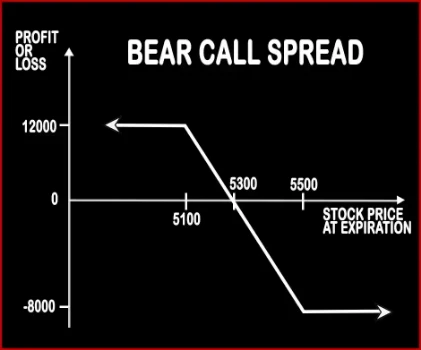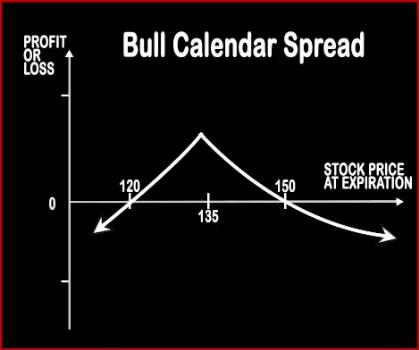Compare Strategies
| BEAR CALL SPREAD | BULL CALENDER SPREAD | |
|---|---|---|

|

|
|
| About Strategy |
Bear Call Spread Option StrategyBear Call Spread option trading strategy is used by a trader who is bearish in nature and expects the underlying asset to dip in the near future. This strategy includes buying of an ‘Out of the Money’ Call Option and selling one ‘In the Money’ Call Option of the same underlying asset and the same expiration date. When you write a call, you receive premium thereby r |
Bull Calendar Spread Option StrategyThis strategy is implemented when a trader is bullish on the underlying stock/index in the short term say 2 months or so. A trader will write one Near Month OTM Call Option and buy one next Month OTM Call Option, thereby reducing the cost of purchase, with the same strike price of the same underlying asset. This strategy is used when a trader wants to make prof .. |
BEAR CALL SPREAD Vs BULL CALENDER SPREAD - Details
| BEAR CALL SPREAD | BULL CALENDER SPREAD | |
|---|---|---|
| Market View | Bearish | Bullish |
| Type (CE/PE) | CE (Call Option) | CE (Call Option) + PE (Put Option) |
| Number Of Positions | 2 | 2 |
| Strategy Level | Beginners | Beginners |
| Reward Profile | Limited | Unlimited |
| Risk Profile | Limited | Limited |
| Breakeven Point | Strike Price of Short Call + Net Premium Received | Stock Price when long call value is equal to net debit. |
BEAR CALL SPREAD Vs BULL CALENDER SPREAD - When & How to use ?
| BEAR CALL SPREAD | BULL CALENDER SPREAD | |
|---|---|---|
| Market View | Bearish | Bullish |
| When to use? | This strategy is used when you are bearish in market view. The strategy minimizes your risk in the event of prime movements going against your expectations. | This strategy is used when a trader wants to make profit from a steady increase in the stock price over a short period of time. |
| Action | Buy OTM Call Option, Sell ITM Call Option | Sell 1 Near-Term OTM Call, Buy 1 Long-Term OTM Call |
| Breakeven Point | Strike Price of Short Call + Net Premium Received | Stock Price when long call value is equal to net debit. |
BEAR CALL SPREAD Vs BULL CALENDER SPREAD - Risk & Reward
| BEAR CALL SPREAD | BULL CALENDER SPREAD | |
|---|---|---|
| Maximum Profit Scenario | Max Profit = Net Premium Received - Commissions Paid | You have unlimited profit potential to the upside. |
| Maximum Loss Scenario | Maximum Loss = Long Call Strike Price - Short Call Strike Price - Net Premium Received | Max Loss = Premium Paid + Commissions Paid |
| Risk | Limited | Limited |
| Reward | Limited | Unlimited |
BEAR CALL SPREAD Vs BULL CALENDER SPREAD - Strategy Pros & Cons
| BEAR CALL SPREAD | BULL CALENDER SPREAD | |
|---|---|---|
| Similar Strategies | Bear Put Spread, Bull Call Spread | The Collar, Bull Put Spread |
| Disadvantage | • Limited amount of profit. • Margin requirement, more commission charges. | • Limited profit even if underlying asset rallies. • If the short call options are assigned when the underlying asset rallies then losses can be sustained. |
| Advantages | • This strategy takes advantage of time decay. • Investors can get profit in a flat market scenario. • Investors can earn options premium income with a lower degree of risk. | • Limited losses to the net debit. • Enable trader to book profit even if underlying asset stays stagnant. • If the market trends reverse, cashing in from stock price movement at limited risk. |